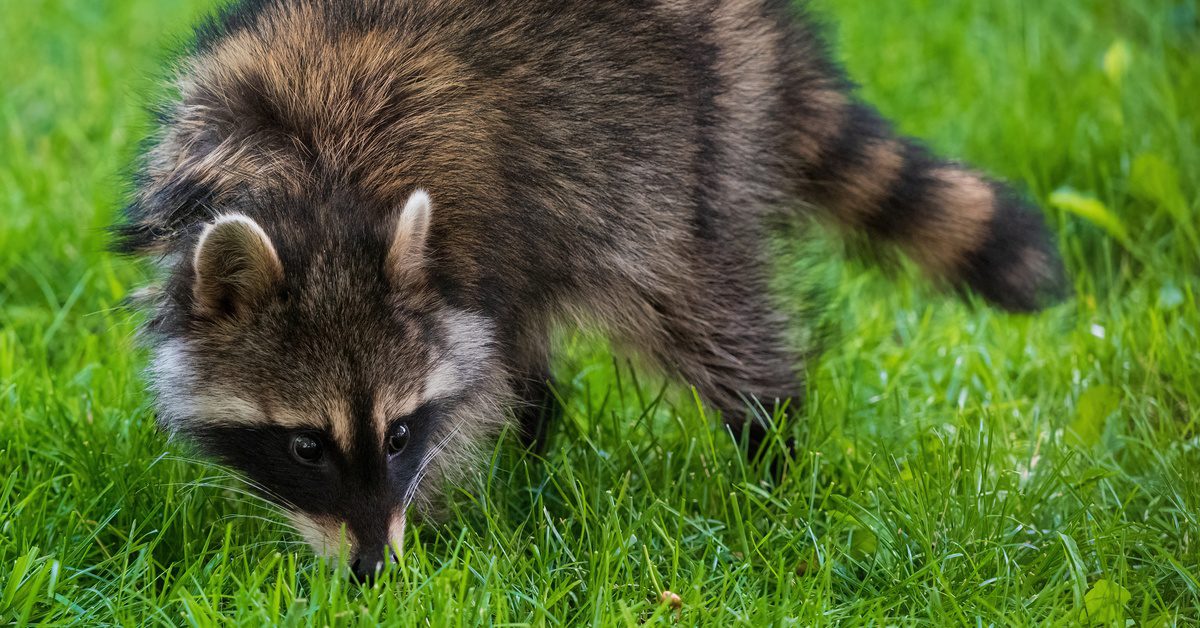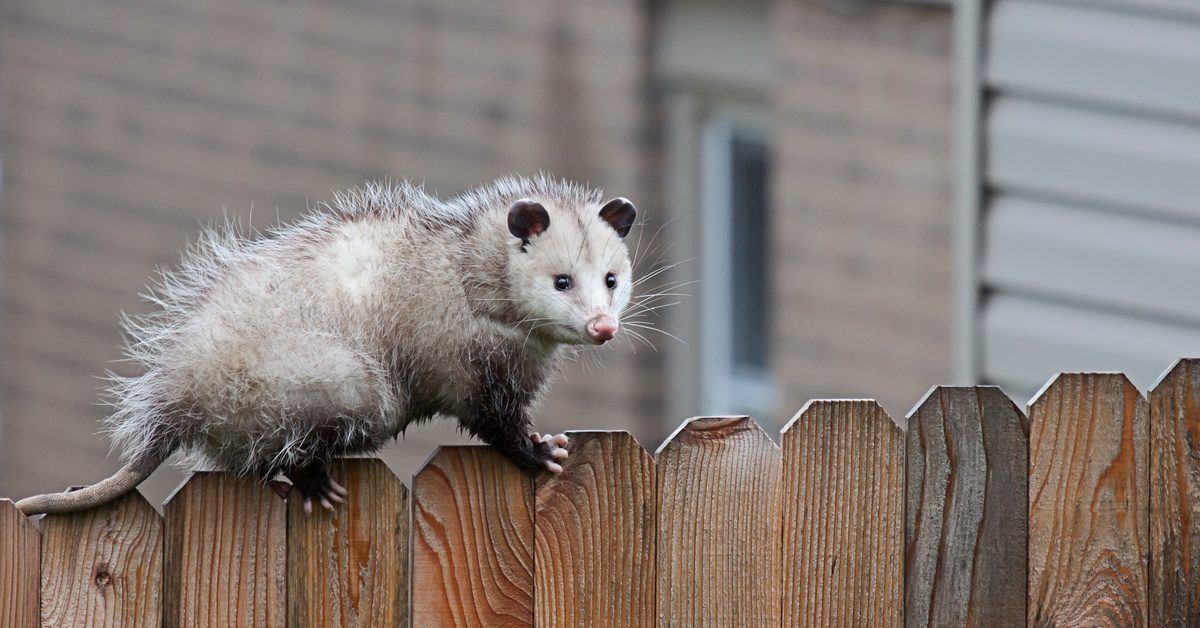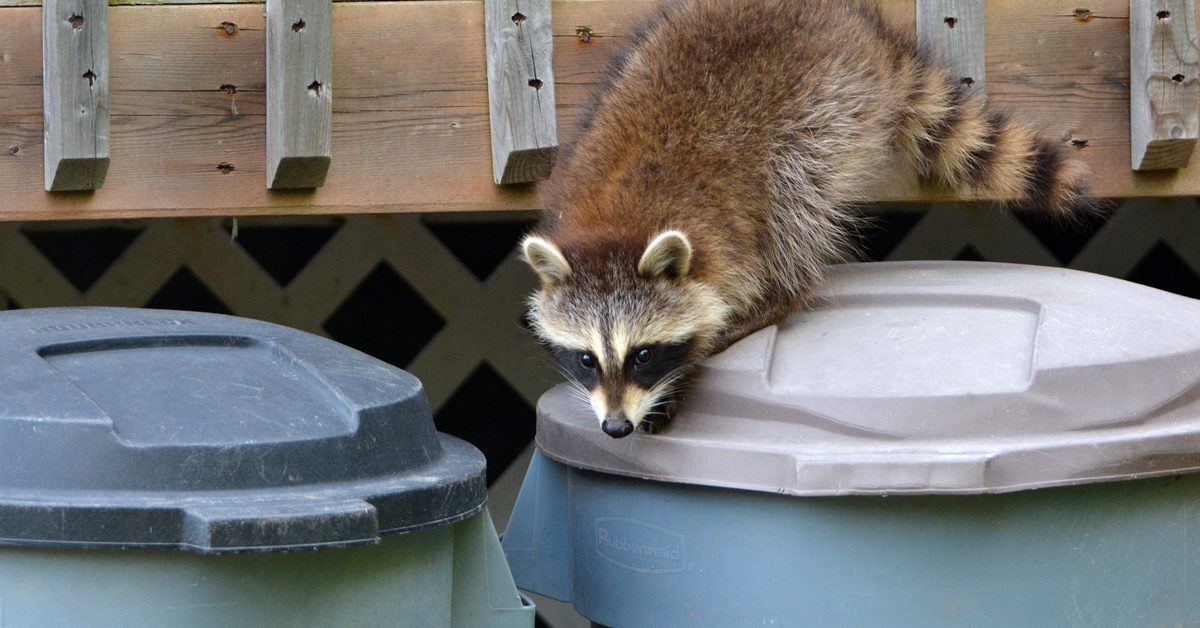
Raccoons vs. Opossums: Identifying the Differences
Whenever you spot a raccoon or opossum around your neighborhood, you may find yourself confusing one for the other. Although both animals have similarities, they also possess unique traits, behaviors, and lifestyles that distinguish them from one another. This post will help you identify the differences between raccoons and opossums so you can make sure you’re targeting the right animal when you call a pest control professional for assistance.
Raccoons and Opossums Differ in Appearance
One of the biggest ways that raccoons and opossums differ from each other is their appearance. People know raccoons for their iconic black fur markings around their eyes, which resemble a mask. Their bushy tails feature alternating rings of light and dark fur.
Raccoons’ coats tend to have various shades of gray, brown, and black, creating a dense layer of fur built to endure cold climates. In addition, a raccoon’s face appears broad with small, rounded ears that protrude slightly from its head. Their stout bodies also make them appear endearingly plump.
On the other hand, opossums have fur that ranges from gray to white, and their long, pointed faces often give them a slightly scruffy look. Unlike the bushy tails of raccoons, opossums have long, hairless tails covered in rough skin.
Their ears look much thinner and are tipped in pink. Those ears protrude more noticeably from the opossum’s head, unlike the compact ear shapes seen in raccoons. Combined with their clawed feet and tapered body frame, opossums have many features that set them apart visually from raccoons.
They Vary in Length and Weight
You can also distinguish raccoons from opossums by their size. Raccoons can measure up to 40 inches from head to tail. Adult raccoons can reach weights of up to 40 pounds, although their diet and habitat may influence these measurements. Broad and muscular, raccoons appear stockier than opossums.
By contrast, opossums tend to weigh less and are proportionately smaller. Fully grown, they can reach lengths of 36 inches, with their weights spanning up to 12 pounds. However, their lighter frame helps them travel with less physical strain, especially while hanging from branches or climbing. Noticing the gap in size can be particularly helpful when trying to determine whether that animal in your yard is a raccoon or opossum.
Both Animals Diverge in Behavior

Raccoons and opossums exhibit different social habits when interacting within their environments. When raccoons encounter dangers, they may retaliate with their claws or teeth. However, opossums prefer simple, nonconfrontational behavioral patterns.
These nocturnal creatures often avoid encounters with predators through defensive tactics, such as playing dead. By feigning lifelessness and releasing a distinct foul odor, opossums’ defensive strategy usually deters attacks from would-be threats. Their behaviors lean toward evasion rather than confrontation, underscoring a difference in temperament compared to raccoons’ more curious and daring attitudes.
You may observe both animals at night due to their nocturnal habits. However, raccoons explore their surroundings with more confidence, while opossums prioritize low-risk movements for their safety.
They Raise Their Young in Different Ways
The family dynamics of raccoons and opossums offer yet another example of the differences between the two species. Raccoons typically give birth in early spring, producing litters of up to seven kits. Mothers display diligent care for their young, raising them for a year. Young raccoons depend heavily on their mother, learning essential skills until they gain independence and leave the den.
Opossums engage in a very different form of child-rearing. Female opossums, known as jills, carry their young in a pouch similar to kangaroos. This marsupial behavior allows newborns to stay nurtured within a protective space until they grow larger. After leaving the pouch, baby opossums still cling to their mother’s back for several weeks.
These distinct methods for rearing young provide a fascinating contrast in the survival strategies of different species. Raccoons rely on behavioral teaching and close bonds, whereas opossums maximize biological adaptation.
Raccoons and Opossums Vary in Food Preferences

Both raccoons and opossums are opportunistic feeders, meaning they consume a wide variety of foods. Although the specific dietary habits of the two species have certain similarities, they also have distinct differences.
Raccoons often find their food in forests, as well as the garbage cans of homes. They favor fruits, nuts, berries, fish, rodents, and even leftovers from human activity. Scavenging defines part of a raccoon’s ecological role, as they sift through garbage and other materials to discover snacks. Their curiosity further encourages a rich, diversified diet compared to more selective eaters.
Contrastingly, opossums focus heavily on consuming insects, small mammals, fruits, and carrion. Their unique ability to consume rotting organic material plays a crucial role in ecosystem cycles and pest regulation. Opossums adjust their diet according to resource availability, dispersing seeds and regulating prey populations.
Both Have Different Lifespans
One last difference between raccoons and opossums is their lifespans. Raccoons generally live longer, and those in the wild often live between two and five years. However, some can last for up to 10 years under ideal conditions. Their intelligence and adaptability can allow raccoons to have longer lifespans as they evade threats and secure reliable sources of food and shelter.
Opossums, however, live shorter lives, averaging just one to two years in the wild. Factors such as predation and environmental challenges contribute to this reduced longevity. Despite their shorter lifespans, opossums maximize their survival potential through high reproductive rates, paving the way for population durability, even amidst natural threats.
This difference in lifespan highlights how each species has evolved strategies tailored to its unique ecological role. Raccoons prolong life through resourcefulness and learning, while opossums rely on reproduction for survival resilience.
Contact Legacy Rodent Control
Identifying the differences between raccoons and opossums is helpful if these pests have invaded your property. Next time you spot a raccoon searching for a late-night snack or an opossum quietly climbing a perch, you will feel less confused as to which animal you’re looking at.
Legacy Rodent Control can help you safeguard your home from these creatures with our services, which include opossum and raccoon removal in Frisco. Reach out to us today. Our professionals will take these animals away and provide you with strategies that will prevent them from coming back.
